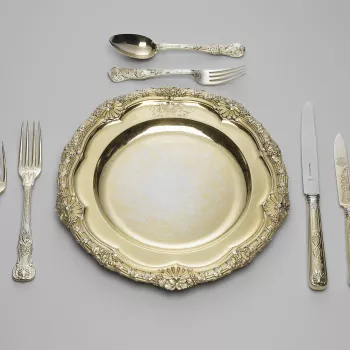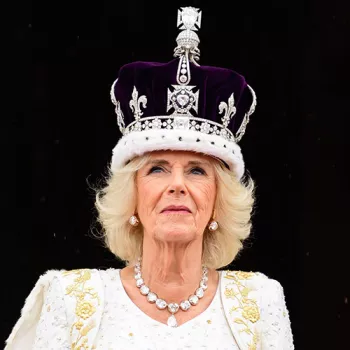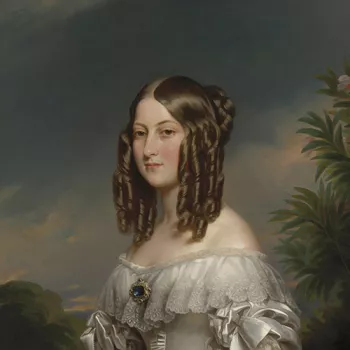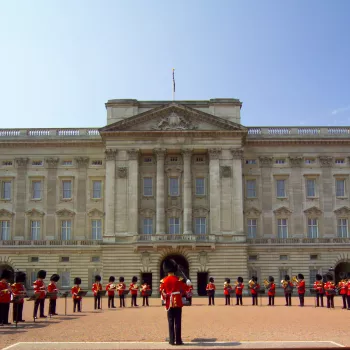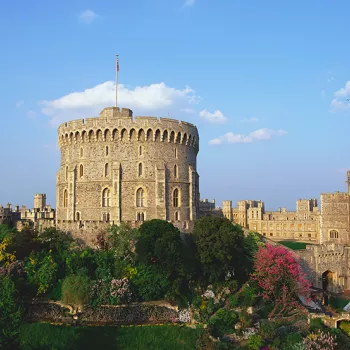State Banquets at Buckingham Palace
A look behind the scenes at this grand feast.
Reading time: 3 minutes
State Banquets are captivating spectacles hosted at one of the royal residences during State Visits. These grand dinners are not just about magnificent food and sparkling chandeliers; they are a glimpse into a fascinating world of diplomacy and tradition.
So, what exactly does a State Banquet involve? Here we share everything you need to know.
What is a State Visit?
A State Visit is a formal visit to the UK by a Head of State from overseas, to strengthen diplomatic, professional and personal relations between the two countries. These visitors include monarchs, presidents or prime ministers.
Guests stay at Buckingham Palace or occasionally at Windsor Castle. Queen Elizabeth II hosted over 150 heads of state during her reign and King Charles III hosted his first State Visit in November 2022.
Planning for a State Visit is a coordinated effort between the Foreign and Commonwealth Office of the government and the Royal Household. The Visit typically includes a series of engagements including meetings with ministers and leaders of commerce and industry. A State Banquet for approximately 170 people is held on the first night of a State Visit.
The invitations
Formal gilt-edged invitations are sent out two months before the event and preparations for the banquet begin several weeks in advance. Invitations are sent to all the ambassadors and high commissioners at the foreign missions in London, as well as past Prime Ministers, the Archbishops of Canterbury and York and other public figures.
The Ballroom at Buckingham Palace
Since 1914 State Banquets in London have traditionally been held in the Ballroom at Buckingham Palace. This enormous room, the largest of the State Rooms, was completed in 1855, during the reign of Queen Victoria. It was originally known as the Ball and Concert Room and features a musicians’ gallery complete with an organ.
There are two thrones in the Ballroom which were made for the coronation ceremony of King Edward VII and Queen Alexandra in 1902. Above them, a triumphal arch, flanked by sphinxes and enclosing the throne canopy. The winged figures at the top of the arch symbolise History and Fame and support a medallion with the profiles of Queen Victoria and Prince Albert.
Transforming the Ballroom for a State Banquet ©
The table
At Buckingham Palace, the table is traditionally arranged in a horseshoe shape, with the monarch and their guest of honour seated at the top table. The table is decorated with over 100 candles in silver-gilt candelabra, along with displays of seasonal fruit and striking flower arrangements in silver-gilt centrepieces.
State Banquets at Windsor Castle are held in St George’s Hall, where the 50m long table runs the whole length of the room. The monarch and Head of State sit in the centre of the table and musicians play from the balcony at the end of the Hall.
The food
The Royal Chef is responsible for devising the menu for a State Banquet, which traditionally consists of four courses. There are two savoury courses, followed by pudding and dessert (fruit).
The Clerk of the Royal Cellars and the Yeoman of the Royal Cellars, in conjunction with the Head of Government Hospitality, choose the wine, which is selected to match the food once the menu has been approved.
The menu is written in French; this example is from the State Banquet held for a visit from Singapore in 2014. A translation of the menu shows a luxurious selection of food:
Fillets of Dover sole filled with salmon mousse on a bed of leeks with a white wine cream sauce
Poached supreme of Sandringham Estate pheasant with truffles, crushed root vegetables, gratinated chard and braised sweet potatoes
Chocolate and praline ice cream bombe
Seasonal fruits
The place settings
For a State Banquet, the table is set using items from the Grand Service as well as other items of precious silver and silver-gilt. Each guest has six glasses at their place setting.
The Grand Service is a dinner service of silver gilt (silver coated in a thin layer of gold) which comprises over 4,000 items. The service was originally made for George IV when Prince of Wales. The initial order cost around £60,000 and was first used at a banquet in 1811. George IV continued to add further pieces for the rest of his life, and his magnificent service has been used in every subsequent reign.
It takes eight people three weeks to clean and polish the service in preparation for a State Banquet.
The pudding course is served on the superb, turquoise-rimmed plates from a service by the Minton factory of Stoke. These were made for Queen Victoria in 1877. The fruit course (also known as dessert) is often served on plates from an 18th-century porcelain service acquired by George IV. Each plate is painted with exotic birds.




